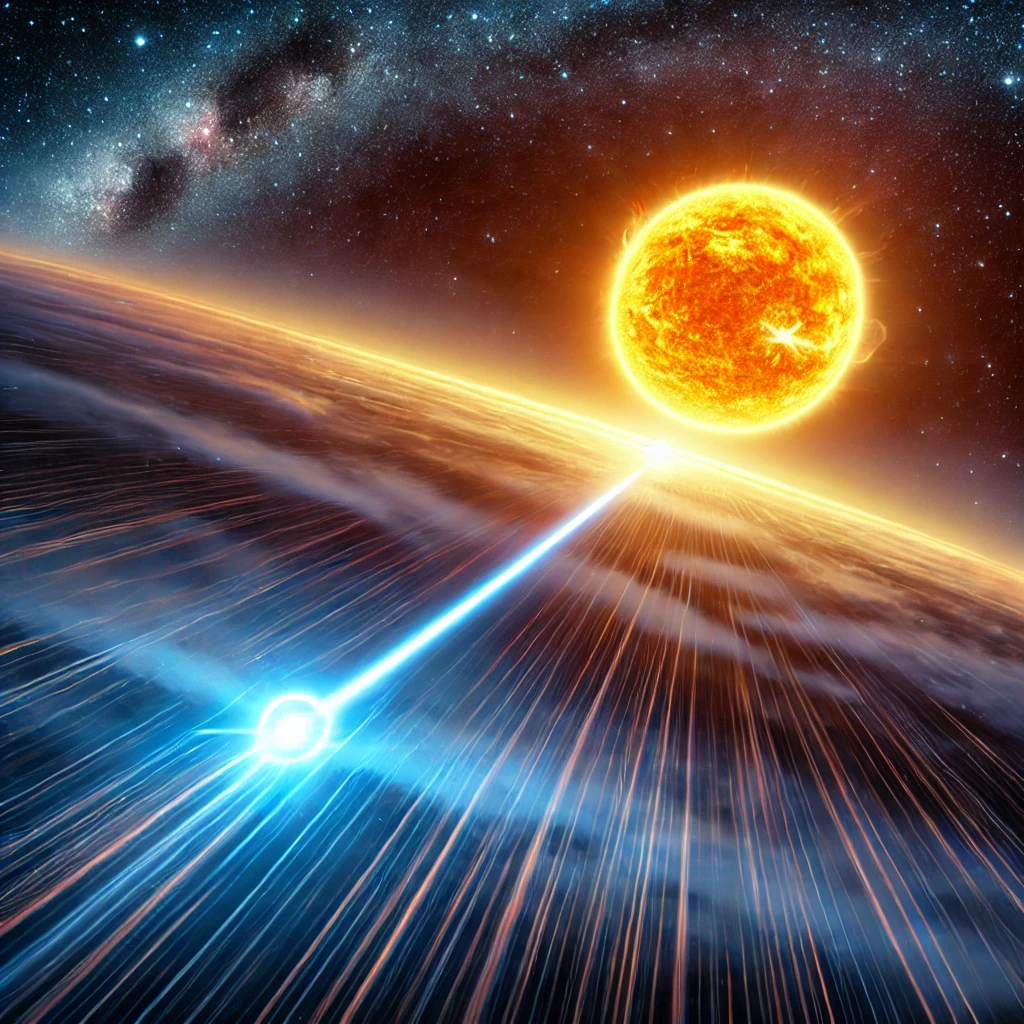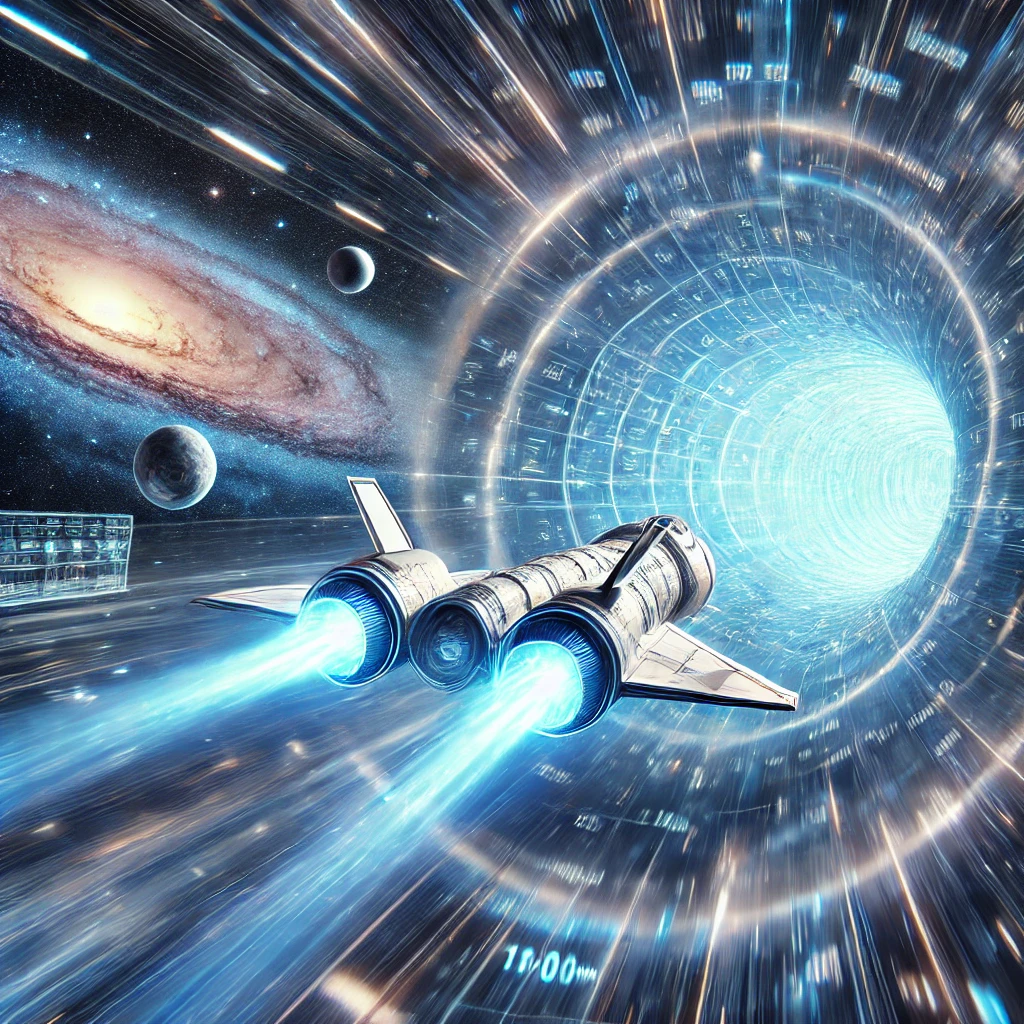Time is Not the Same for Everyone
Imagine embarking on a space journey at incredible speeds, close to the speed of light. When you return to Earth, you find that only a few years have passed for you, while centuries or even millennia have gone by on our planet. It sounds like science fiction, but it’s actually a consequence of Einstein’s theory of relativity. How is this possible? Let’s find out!
The Faster You Travel, the Slower Time Passes
One of Einstein’s most astonishing discoveries is that time does not flow at the same rate for everyone: the faster you travel, the more time slows down for you compared to someone who stays still. This effect, known as time dilation, becomes significant only at extremely high speeds, such as those close to the speed of light.
The Twin Paradox
Let’s look at a practical example: two twins, Alice and Bob. Alice stays on Earth, while Bob departs on a spaceship traveling at 90% of the speed of light (about 270,000 km/s). After 10 years, Bob returns home and finds that only a few years have passed for him, while his sister Alice is much older! This phenomenon has been confirmed by experiments using atomic clocks on high-speed airplanes.
What If You Were a Photon?
 Now, let’s imagine something even more extreme: what would happen if you could travel exactly at the speed of light?
Now, let’s imagine something even more extreme: what would happen if you could travel exactly at the speed of light?
Time for you would completely stop.
The distance between your departure and arrival would shrink to zero.
Your journey would be instantaneous from your perspective.
This means that a photon, the particle of light, does not “experience” the passage of time. A beam of light leaving a distant star billions of light-years away takes billions of years to reach us—but for the photon itself, the journey is immediate!
An Experiment to Understand Time Dilation
Even though we can’t travel at the speed of light, there is a way to experience time dilation in everyday life. Take two synchronized clocks: leave one on the ground and take the other with you on an airplane flying for several hours at high speed. When you compare the clocks after the flight, you will find that the clock on the airplane has recorded slightly less time than the one on the ground. This effect, although very small, has been measured with extreme precision and confirms that time moves slower for those who travel fast.
To give an idea: a commercial airplane flies at about 900 km/h, and an atomic clock on board a flight shows a time difference in the range of nanoseconds compared to one left on the ground.
Military Jets and Time Dilation
What if instead of a commercial airplane, we used a military jet capable of exceeding the speed of sound? The effect would be even more pronounced. For example, experiments conducted with supersonic jets like the SR-71 Blackbird (which can reach about 3,500 km/h) have confirmed that clocks on board experience measurable time dilation compared to those left on the ground. The faster you travel, the greater the difference in time perception, proving once again that time is relative.
Avoiding Time Travel: Possible Solutions
If we wanted to travel through space without facing the problems caused by time dilation, some theoretical solutions might help:
Warp Drive: The Alcubierre Drive, theorized by Miguel Alcubierre, would allow travel by warping space-time around the spaceship, avoiding time dilation.
Wormholes: If they could be stabilized, these space-time tunnels would connect two distant points in the universe without traveling through the space in between.
Gravity Manipulation: By creating artificial gravitational fields, we could synchronize the astronaut’s time with that of Earth.
Traveling at Moderate Speeds: Staying below a certain percentage of the speed of light would reduce relativistic effects.
Traveling into the Future: Reality or Science Fiction?
If we could build a spaceship capable of traveling close to the speed of light, we could literally travel into the future. For example, a ship moving at 99.9% of the speed of light would experience time passing about 22 times more slowly compared to Earth. We could depart today, travel vast distances in just a few years (from our perspective), and return to find that centuries have passed on Earth. A way to leap forward in time—with no possibility of going back.
Time is Relative
Thanks to Einstein, we have discovered that time is not absolute, but changes depending on speed. Even though we can’t yet travel at relativistic speeds, every time we look at the sky, we are already seeing the past: the light from distant stars has traveled for millions or even billions of years before reaching our eyes.
The universe is a vast time machine… and the key to understanding it lies in relativity!
Further Reading:








Leave a Comment